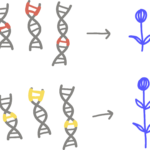Unlock the Mystery: Why Autistic Children Become Nonverbal

In the world of neurodiversity, where every mind possesses its unique landscape, lies this question: Why Autistic Children Become Nonverbal? This may be because they have speech disorders, a disorder that affects certain brain pathways will interfere with a person’s ability to say what they want correctly and they are also difficult to Diagnose
Imagine a world where words are elusive butterflies, fluttering just out of reach for some. This is the reality for many autistic children, whose journey through the realm of communication takes them down a path less traveled.
But what leads them to this juncture of silence? It’s a question that beckons us to explore the inner workings of the autistic mind with a keen eye and an open heart.
From the corridors of neuroscience to the halls of early intervention, every piece of the puzzle holds significance in deciphering the riddle of nonverbal autism.
As we embark on this voyage of discovery, let us embrace the complexity, celebrate the resilience, and pave the way for a future where every voice, in whatever form it may take, is heard and valued.
Join us on this journey as we unravel the mysteries and illuminate the path forward for autistic children navigating the labyrinth of nonverbal communication.
Definition of Nonverbal Autism
Nonverbal autism refers to a subtype of autism spectrum disorder (ASD) where individuals face significant challenges in verbal communication.
Despite having the capability to understand language, these individuals struggle to express themselves verbally.
Reasons Behind Nonverbal Communication in Autistic Children
Recognizing the underlying factors contributing to nonverbal communication difficulties is crucial for developing tailored interventions and fostering inclusivity within society.
By understanding the reasons behind nonverbal autism, we can create a supportive environment that promotes communication diversity.
Understanding Autism Spectrum Disorder (ASD)
Overview of Autism Spectrum Disorder
ASD is a complex neurodevelopmental disorder characterized by challenges in social interaction, communication, and repetitive behaviors.
It exists on a spectrum, with individuals exhibiting a wide range of symptoms and abilities.
Different Levels of Functioning Within ASD
Autism manifests differently in each individual, leading to varying levels of functioning. Some individuals may require minimal support, while others may need significant assistance in daily activities.
Prevalence of Nonverbal Autism
Nonverbal autism is relatively common within the ASD population, though its prevalence varies.
Research suggests that a significant percentage of autistic individuals struggle with verbal communication, highlighting the importance of addressing this issue.
Communication Challenges in Autism
Communication Difficulties in Autistic Individuals
Autistic individuals often face challenges in both verbal and nonverbal communication. These difficulties can range from limited speech to challenges in understanding social cues and gestures.
Importance of Communication for Social Interaction
Effective communication is essential for building relationships, expressing needs, and participating in everyday activities.
For autistic individuals, communication challenges can impact their ability to engage with others and navigate social situations.
Types of Communication Challenges in Autism
Communication challenges in autism encompass a wide range of difficulties, including difficulty initiating and maintaining conversations, interpreting tone of voice, and understanding nonverbal cues such as facial expressions and body language.
Factors Contributing to Nonverbal Communication in Autism
Neurodevelopmental Factors Influencing Communication in Autistic Children
The neurodevelopmental differences associated with autism can affect various aspects of communication, including language development, social skills, and sensory processing.
Genetic and Environmental Influences on Language Development
Both genetic and environmental factors play a role in shaping language development in autistic children. Understanding these influences can provide insights into effective intervention strategies.
Brain Differences in Autistic Individuals Affecting Communication Abilities
Brain imaging studies have revealed structural and functional differences in the brains of autistic individuals, particularly in regions associated with language and communication.
These differences contribute to the communication challenges experienced by nonverbal autistic children.
Sensory Processing and Communication
Sensory Processing Differences in Autism
Many autistic individuals experience sensory sensitivities or differences in sensory processing, which can impact their communication skills. For example, sensitivity to certain sounds or textures may make it challenging to engage in verbal communication.
Impact of Sensory Sensitivities on Communication Skills
Sensory sensitivities can interfere with an individual’s ability to focus, attend to communication partners, and process incoming information.
Addressing sensory challenges is essential for optimizing communication outcomes in autistic children.
Strategies for Addressing Sensory Challenges in Communication
Implementing sensory-friendly environments and providing sensory accommodations can help minimize barriers to communication for autistic individuals.
This may include using visual supports, providing quiet spaces, or incorporating sensory breaks into daily routines.
Motor Skills and Communication
Motor Coordination Difficulties in Autistic Children
Many autistic children experience challenges with motor coordination, which can affect their ability to produce speech sounds and engage in other forms of communication.
These difficulties may manifest as delays in speech development or difficulty with fine motor tasks such as writing.
Connection Between Motor Skills and Speech Development
Motor skills play a crucial role in speech production, as the coordination of facial muscles and breath control is necessary for clear articulation.
Improving motor skills can positively impact a child’s ability to communicate verbally.
Interventions to Improve Motor Skills for Enhanced Communication
Occupational therapy and other interventions focused on improving motor coordination can benefit autistic children by enhancing their ability to engage in verbal communication and other forms of expressive communication.
Social Communication and Nonverbal Autism
Importance of Social Communication Skills
Social communication skills are essential for building relationships, understanding social norms, and navigating social interactions. Autistic children may face challenges in this area, impacting their ability to connect with others.
Challenges in Understanding Social Cues and Gestures
Autistic children may have difficulty interpreting social cues such as facial expressions, body language, and tone of voice. This can lead to misunderstandings and challenges in social communication.
Strategies for Teaching Social Communication
Structured teaching approaches, social skills training, and explicit instruction in social communication can help nonverbal autistic children develop the skills they need to interact successfully with others.
Visual supports and role-playing activities may be particularly effective in teaching social skills.
Alternative Forms of Communication
Augmentative and Alternative Communication (AAC) Methods
AAC methods provide nonverbal individuals with alternative ways to communicate, such as using picture symbols, sign language, or communication devices.
These tools can empower individuals with nonverbal autism to express themselves and engage with others.

Visual Supports and Picture Communication Systems
Visual supports, such as visual schedules, communication boards, and social stories, can help nonverbal autistic children understand and navigate their environment.
These supports provide visual cues to support communication and enhance comprehension.
Technology-Based Communication Aids for Nonverbal Individuals
Advancements in technology have led to the development of communication devices and apps designed specifically for nonverbal individuals.
These tools offer customizable options for communication and can be tailored to meet the unique needs of each user.
Early Intervention for Nonverbal Autism
Importance of Early Intervention for Language Development
Early intervention is crucial for supporting language development in nonverbal autistic children.
Research has shown that early identification and intervention can lead to improved communication outcomes and overall functioning.
Screening and Diagnosis of Nonverbal Autism
Screening tools and diagnostic assessments are used to identify nonverbal autism and determine the individual’s specific communication needs. Early diagnosis allows for timely intervention and support services.
Communication Skills in Young Autistic Children
Evidence-based interventions, such as applied behavior analysis (ABA), speech therapy, and occupational therapy, can help nonverbal autistic children develop communication skills and reach their full potential.
These interventions are tailored to address the individual’s unique strengths and challenges.
Family Support and Advocacy
Impact of Nonverbal Autism on Families
Nonverbal autism can have a significant impact on families, affecting relationships, daily routines, and overall quality of life. Family members may experience stress, frustration, and feelings of isolation as they navigate the challenges associated with nonverbal communication.
Resources and Support Networks for Families of Nonverbal Autistic Children
Access to resources and support networks is essential for families of nonverbal autistic children. This may include support groups, parent training programs, and educational materials designed to help families understand and support their child’s communication needs.
Advocacy Efforts for Inclusive Education and Community Support
Advocacy plays a critical role in promoting inclusivity and ensuring that nonverbal autistic individuals have access to the support and services they need to thrive.
Advocates work to raise awareness, influence policy, and create positive change within communities.
Educational Strategies for Nonverbal Autism
Individualized Education Plans (IEPs) for Nonverbal Autistic Students
IEPs outline specific goals, accommodations, and supports for nonverbal autistic students to ensure they receive a tailored education that meets their unique needs.
Collaboration between educators, therapists, and parents is key to developing and implementing effective IEPs.
Communication-Focused Classroom Strategies
Teachers can implement communication-focused strategies to support nonverbal autistic students in the classroom.
This may include using visual supports, incorporating structured routines, and providing opportunities for alternative forms of communication.
Communication Development support
Collaboration between educational professionals, therapists, and parents is essential for supporting communication development in nonverbal autistic children.
By working together, these stakeholders can share insights, set goals, and implement effective strategies to promote communication skills.
Speech Therapy and Nonverbal Autism
Role of Speech-Language Pathologists in Treating Nonverbal Autism
Speech-language pathologists play a crucial role in assessing, diagnosing, and treating communication disorders, including nonverbal autism.
These professionals use evidence-based techniques to support speech and language development in autistic individuals.
Techniques and Approaches Used in Speech Therapy for Autistic Individuals
Speech therapy for autistic individuals may involve a combination of traditional techniques, such as articulation exercises and language drills, as well as alternative approaches, such as visual supports and AAC methods. Therapy sessions are tailored to the individual’s specific needs and abilities.
Success Stories and Case Studies of Nonverbal Autistic Child
There are many success stories of nonverbal autistic individuals who have made significant gains in their communication abilities with the support of speech therapy and other interventions.
These success stories highlight the potential for growth and development in individuals with nonverbal autism.
Building Connections Through Nonverbal Communication
Respecting Nonverbal Communication
Nonverbal communication plays a vital role in human interaction, conveying emotions, intentions, and social cues. It is essential to understand and respect nonverbal communication, particularly in individuals with nonverbal autism.
Strategies for Fostering Connections with Nonverbal Autistic Individuals
Building connections with nonverbal autistic individuals requires patience, understanding, and empathy. Strategies such as active listening, using visual supports, and respecting personal space can help facilitate meaningful communication and connection.
Unique Ways Autistic Individuals Express Themselves Nonverbally
Autistic individuals often express themselves in unique and creative ways, utilizing nonverbal communication methods such as gestures, facial expressions, and body language. Celebrating and valuing these forms of expression fosters a culture of acceptance and inclusion.
Research and Future Directions
Current Research on Nonverbal Autism
Ongoing research in the field of nonverbal autism seeks to better understand the underlying causes of communication difficulties and develop innovative interventions to support autistic individuals.
Advances in genetics, neuroscience, and technology hold promise for improving outcomes for nonverbal autistic individuals.
Promising Interventions and Therapies on the Horizon
Emerging interventions and therapies show promise for addressing the communication needs of nonverbal autistic individuals.
From novel technologies to innovative therapeutic approaches, these advancements have the potential to transform the landscape of autism intervention.
Advocacy for Continued Funding and Support for Autism Research
Advocacy efforts play a crucial role in ensuring that autism research receives the funding and support it needs to continue making strides in understanding and addressing nonverbal autism.
By advocating for increased awareness and resources, we can contribute to a brighter future for all autistic individuals.
Conclusion
In conclusion, understanding the factors contributing to nonverbal autism is essential for providing effective support and intervention for autistic individuals.
By recognizing the importance of communication, embracing alternative forms of expression, and advocating for inclusivity, we can create a world where all autistic individuals have access to the communication support they need to thrive. Together, let’s work towards a future where every voice is heard and valued.









